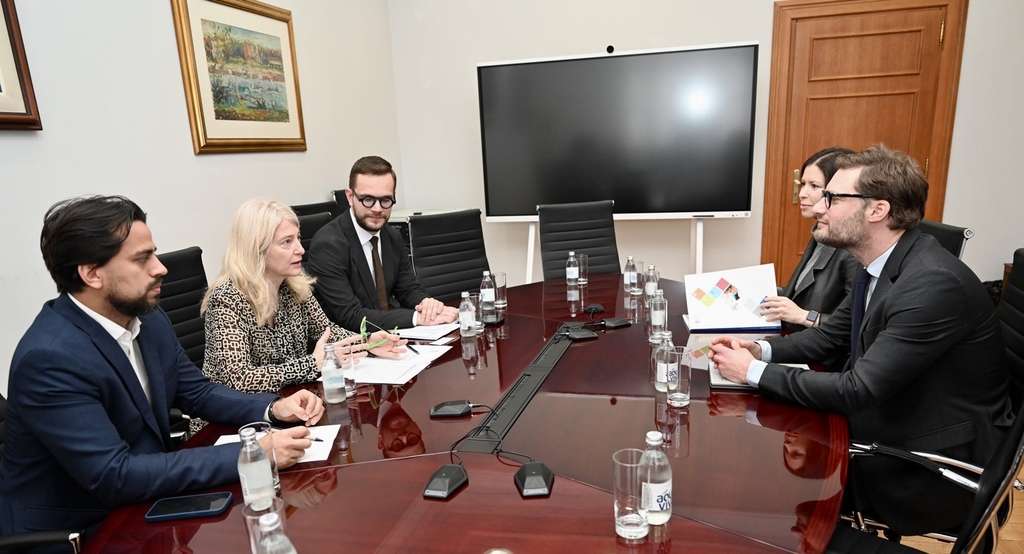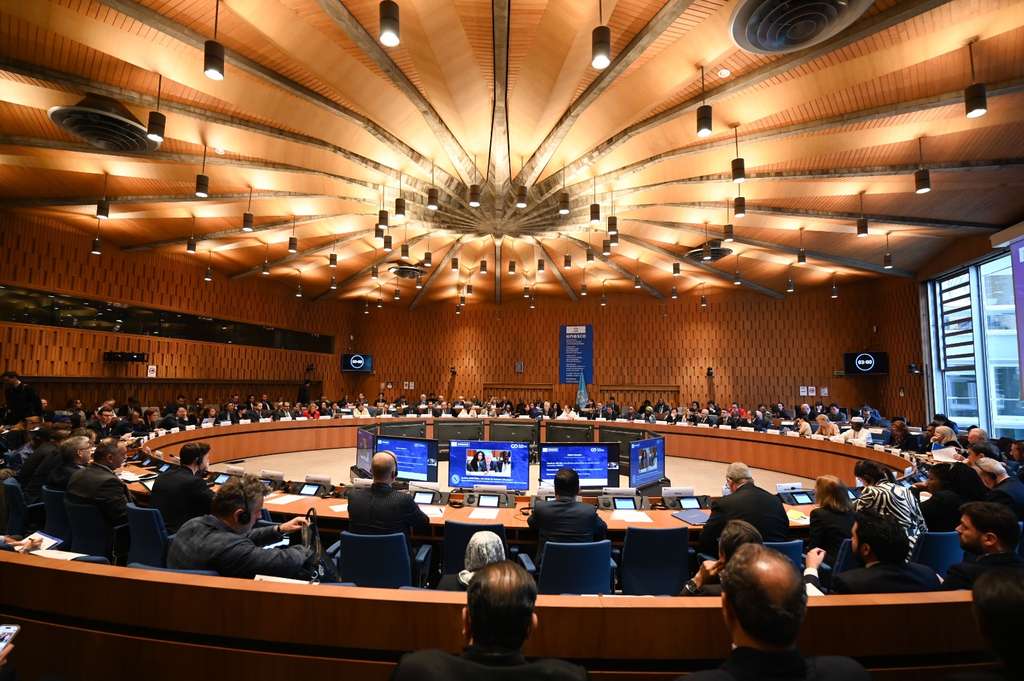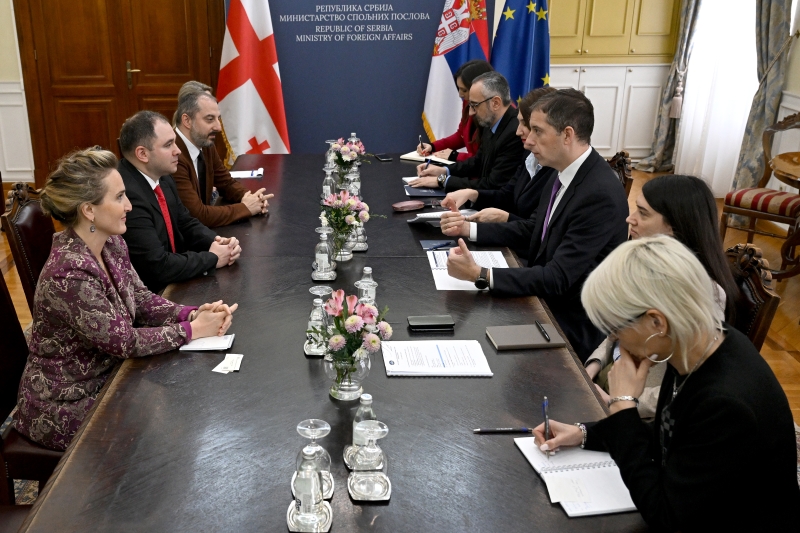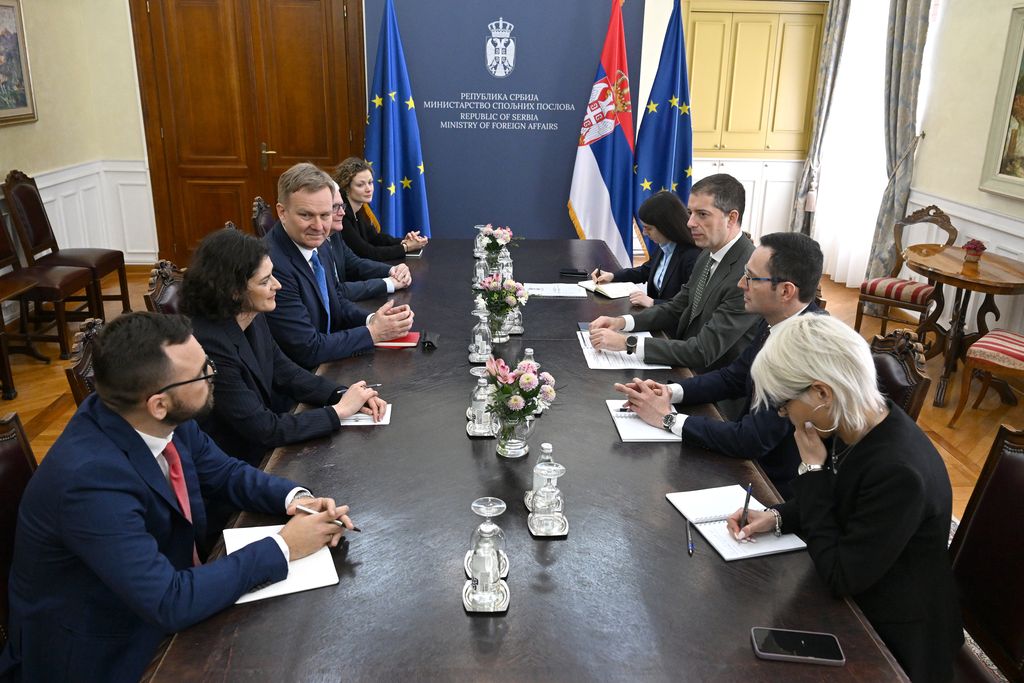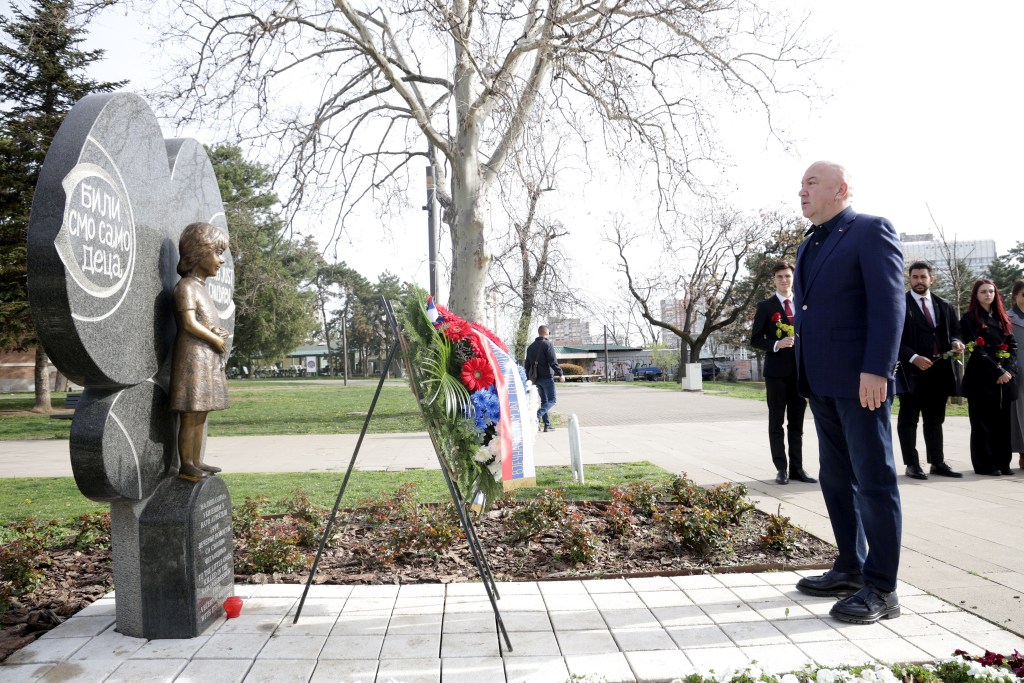Q:
A:
Regional countries must cooperate to halt climate change
Belgrade,
11 October 2007
Serbian Minister of Environmental Protection Sasa Dragin stated today that one of the recommendations of the Belgrade initiative on cooperation in Southeast Europe regarding climate change is to set up a regional centre for monitoring climate changes in Belgrade.
At the conference themed "Environment for Europe", Dragin explained that the regional centre for monitoring climate change would be part of the Serbian Hydrometeorology Institute which already has the necessary infrastructure at its disposal.
He said that the centre’s basic task would be to increase the capacity of governmental, scientific and non-governmental organisations and other institutions in countries of the region which would thus deal with climate change in a competent manner.
Secretary-General of the International Meteorological Organisation (IMO) Michel Jarraud said that the IMO supports the Belgrade initiative and stressed that the regional centre for monitoring climate change should work on information-sharing and education and professional development of its staff.
The Belgrade initiative implies joint work of Southeast European countries on drafting a climate change action plan and establishing partner relations with all significant institutions in the region and beyond.
As part of the 6th Ministerial Conference, the second Environmental Performance Review (EPR) was launched today, based on the progress which Serbia made in managing the environment since the drafting of the first EPR in 2002.
Minister Dragin said that the EPR reflects the efforts aimed at improving the environment in Serbia and that the ministry’s goals are further harmonisation with EU laws, development of a comprehensive legal system, adoption of by-laws and monitoring their enforcement.
According to Dragin, the Serbian government will introduce strategic measures in other ministries as well so that environmental requirements are included in their policies.
The drafting of the second EPR of Serbia started in May 2006 and was conducted by experts from the Czech Republic, Germany and Italy, as well as experts of the European Environment Agency and UN Economic Commission for Europe.
An analysis of the Tisa River basin was presented today at the conference. The river basin is in endangered by pollution, production of machinery, floods and droughts.
Representatives of five countries through which the Tisa runs – Ukraine, Romania, Slovakia, Hungary and Serbia – agreed that only through cooperation can they preserve all resources in the basin.
Director of the Serbian Water Directorate Nikola Marjanovic pointed out that problems with the Tisa are the severest in Serbia in terms of quality and quantity since Serbia is the river’s final destination.
In 2004, Tisa countries agreed to prepare a management plan by 2009 in order to satisfy the requirements of the EU Water Framework Directive envisioned by 2015.
The draft of the plan will be prepared by the end of 2008 and will focus on priority issues such as pollution with organic materials, nutrients and hazardous materials, as well as the problem of voluminous machinery production on the river.
He said that the centre’s basic task would be to increase the capacity of governmental, scientific and non-governmental organisations and other institutions in countries of the region which would thus deal with climate change in a competent manner.
Secretary-General of the International Meteorological Organisation (IMO) Michel Jarraud said that the IMO supports the Belgrade initiative and stressed that the regional centre for monitoring climate change should work on information-sharing and education and professional development of its staff.
The Belgrade initiative implies joint work of Southeast European countries on drafting a climate change action plan and establishing partner relations with all significant institutions in the region and beyond.
As part of the 6th Ministerial Conference, the second Environmental Performance Review (EPR) was launched today, based on the progress which Serbia made in managing the environment since the drafting of the first EPR in 2002.
Minister Dragin said that the EPR reflects the efforts aimed at improving the environment in Serbia and that the ministry’s goals are further harmonisation with EU laws, development of a comprehensive legal system, adoption of by-laws and monitoring their enforcement.
According to Dragin, the Serbian government will introduce strategic measures in other ministries as well so that environmental requirements are included in their policies.
The drafting of the second EPR of Serbia started in May 2006 and was conducted by experts from the Czech Republic, Germany and Italy, as well as experts of the European Environment Agency and UN Economic Commission for Europe.
An analysis of the Tisa River basin was presented today at the conference. The river basin is in endangered by pollution, production of machinery, floods and droughts.
Representatives of five countries through which the Tisa runs – Ukraine, Romania, Slovakia, Hungary and Serbia – agreed that only through cooperation can they preserve all resources in the basin.
Director of the Serbian Water Directorate Nikola Marjanovic pointed out that problems with the Tisa are the severest in Serbia in terms of quality and quantity since Serbia is the river’s final destination.
In 2004, Tisa countries agreed to prepare a management plan by 2009 in order to satisfy the requirements of the EU Water Framework Directive envisioned by 2015.
The draft of the plan will be prepared by the end of 2008 and will focus on priority issues such as pollution with organic materials, nutrients and hazardous materials, as well as the problem of voluminous machinery production on the river.







